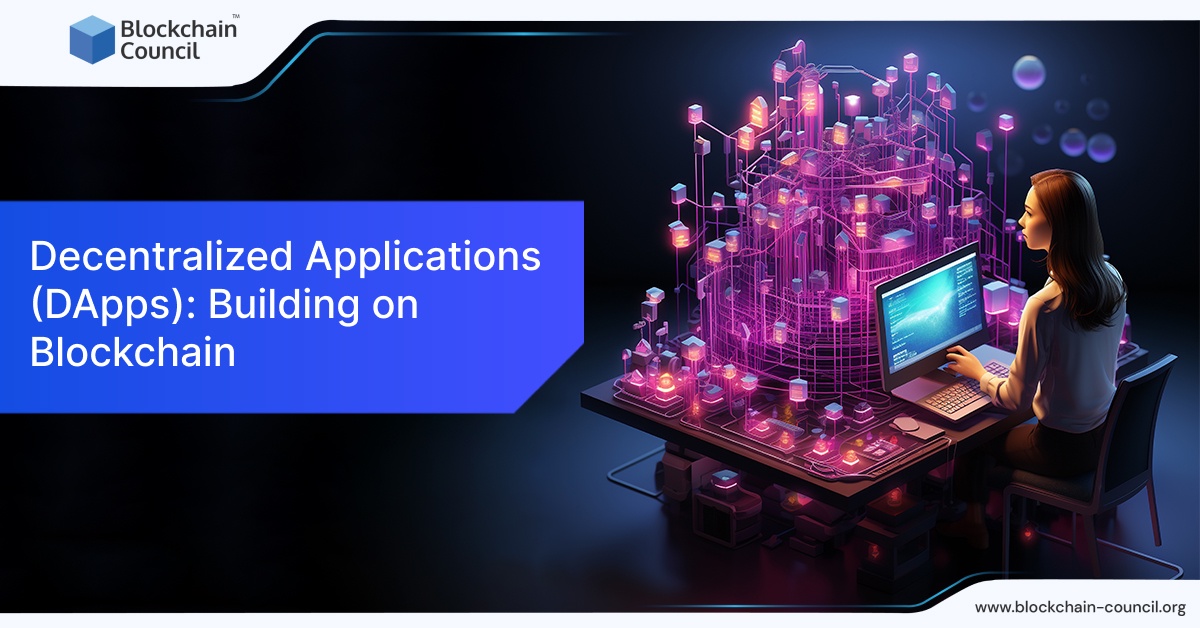In the rapidly changing world of technology, blockchain has shown itself to be a revolutionary force, altering established procedures and opening the door to creative solutions. Blockchain serves as a distributed ledger for electronic commerce. DApps, or decentralized applications, are the driving force behind this change. They offer a paradigm shift in how apps are perceived, used, and built. Using the fundamental ideas of blockchain technology, decentralized apps (DApps) create transparent, safe, decentralized, and autonomous networks. In the following paragraphs, we shall explore decentralized applications (DApps), looking at their foundations, characteristics, and significant functions in the digital ecosystem.
Knowing Ethereum DApps
Ethereum is a trailblazing blockchain platform that was the first to provide intelligent contracts, simplifying the development of decentralized apps (DApps). Unlike Bitcoin, Ethereum has other uses beyond just digital money. Its robust scripting language, Solidity, enables it to be used as a decentralized platform for developing DApps. Ethereum's versatility and support for smart contracts allow developers to design decentralized applications across several industries. These apps can be utilized in various industries, such as supply chain management, gaming, and healthcare.
Smart contracts: The foundation
Smart contracts—self-executing contracts with their terms and conditions recorded on the blockchain—are vital in creating decentralized apps (DApps). These contracts offer transparency and lessen the possibility of fraud or manipulation by eliminating the need for intermediaries and automating the enforcement process. Smart contracts provide smooth transaction execution and simplify the integration of complex features in decentralized apps (DApps). They start specific actions when conditions are met based on predefined situations. This causes procedures to become simpler and productivity to increase in various sectors.
Decentralized Applications (DApps): From the Viewpoint of Developers
Aspiring developers interested in developing blockchain applications must comprehend the complexity of decentralized applications (DApps). One of the most crucial steps is to gain a solid understanding of Solidity, the programming language used for automated contracts. Various online blockchain courses teach blockchain development fundamentals, allowing people to obtain a thorough education in blockchain technology. By finishing these courses, prospective blockchain developers will acquire the skills necessary to create, deploy, and manage decentralized applications.
Challenges with Interoperability and Scalability
The two main issues with decentralized applications (DApps) are interoperability and scalability. The increasing number of decentralized applications (DApps) across many blockchain networks is making it more and more evident that seamless interaction between diverse protocols is required. Developers are looking into possible solutions to promote interoperability and enhance scalability, including layer-two scaling techniques and cross-chain communication protocols. These initiatives aim to create a network of interconnected ecosystems where decentralized applications (DApps) can easily interact with one another and carry out transactions, regardless of the blockchain they are running on.
DApp Security
When it comes to creating and implementing decentralized applications (DApps), security is still of the utmost importance. Despite blockchain technology's inherent security protections, there are vulnerabilities in smart contracts or decentralized protocols that could potentially result in dangerous situations. Smart contract audits, formal verification techniques, and adherence to standard security procedures are essential to lessen the possibility of these risks materializing. Moreover, ongoing studies and advancements in blockchain security aim to fortify decentralized applications (DApps) against possible dangers. This will shield user data and assets from potential harm in decentralized ecosystems.
User Adoption and User Experience (UX)
One of the most critical factors in deciding how well-decentralized applications (DApps) work is user adoption. For these applications to become widely accepted, they must offer a seamless user experience (UX). Enhancing user experience can be achieved by streamlining the onboarding procedure, refining interface designs, and ensuring straightforward decentralized application interactions. Projects focusing on improving user experience (UX) are essential in gaining a more extensive user base and easing the transition from centralized to decentralized systems.
Regulatory Framework and Compliance
Blockchain and decentralized application (DApp) developers require assistance navigating the regulatory framework and upholding compliance. Governments and regulatory bodies are developing compliance frameworks as they strive to comprehend blockchain technology and establish regulations for it. Decentralized application (DApp) developers must adhere to legal regulations and compliance standards to guarantee that DApps are legal and free from legal issues. The industry and regulators must collaborate to establish an atmosphere conducive to creating decentralized applications (DApps) while also upholding adherence to the current regulatory framework.
Instruction and Preparation for Blockchain Professionals
Through training and instruction, there is a growing demand for experienced blockchain developers as decentralized apps (DApps) become more widely used across industries. To meet this requirement, many online platforms and universities provide the most complete blockchain courses, including immersive training programs. These courses cover various subjects, such as deploying decentralized apps, security protocols, intelligent contract implementation, and blockchain architecture. Students who want to work as developers can acquire the knowledge and abilities needed to successfully navigate the complexities of blockchain development by combining their academic studies with real-world experience.
An Overview of Blockchain Technology Development
The Evolution of Blockchain Developer Continuous invention and improvement have been hallmarks of blockchain technology development. As decentralized apps (DApps) gain traction, developers are looking at new frameworks and protocols to enhance sustainability, scalability, and interoperability. An increasing amount of initiatives are trying to get beyond the limitations of the current blockchain networks. These initiatives aim to develop more user-friendly and efficient decentralized solutions. Furthermore, the integration of various technologies like the Internet of Things (IoT), decentralized finance (DeFi), and artificial intelligence (AI) is altering the functionalities and capabilities of decentralized applications (DApps), creating previously unimaginable opportunities.
In summary
In conclusion, decentralized applications, or DApps, exemplify blockchain technology's transformative potential. They show us a glimpse of a future where decentralized, transparent, and trustless institutions will transform industries and break conventional boundaries. Aspiring developers curious about this cutting-edge field can start their journey of discovery by enrolling in training and educational programs for reliable blockchain developers. People can help decentralized apps (DApps) continue to expand by learning about the intricacies of blockchain development and creative contract programming. As a result, people can influence a decentralized future that will empower people and completely transform how we interact with technology.


No comments yet